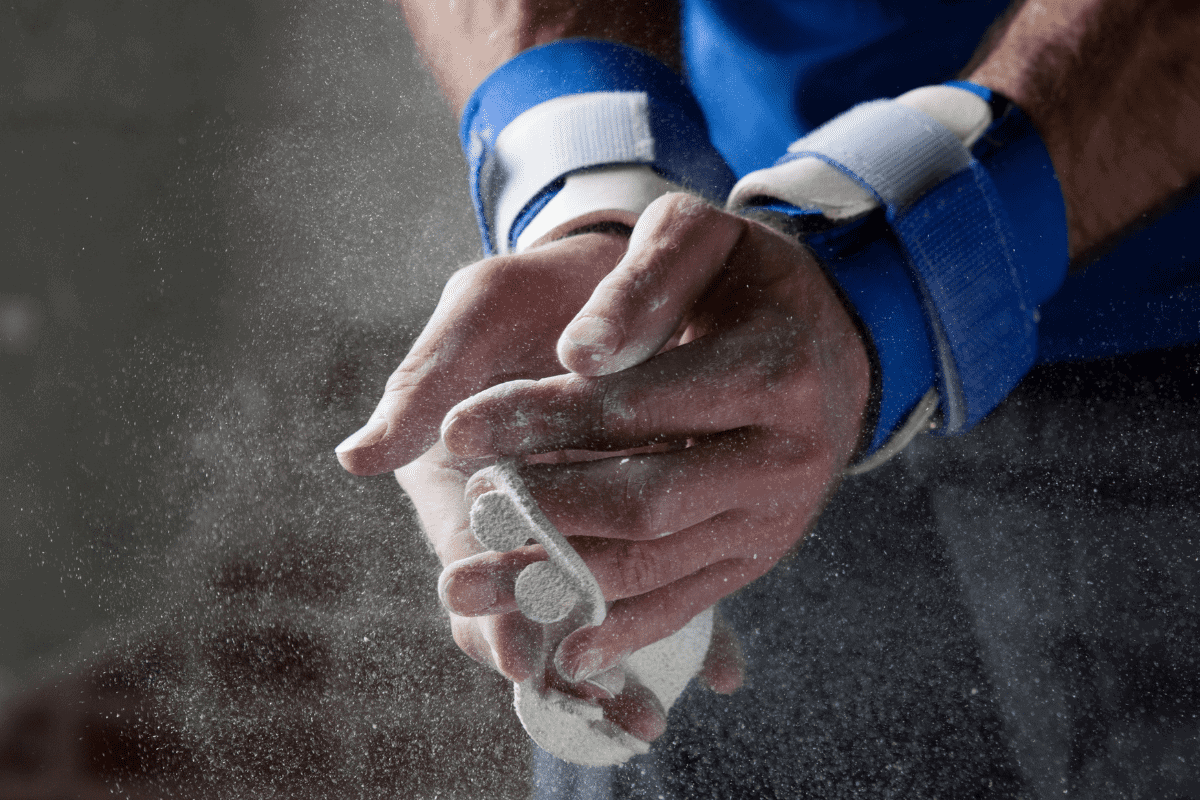What is Gym Chalk Used For? (Complete Guide)
Contrary to popular belief with a lot of the athletes that I’ve trained, gym chalk is not in a weight room just for the purpose of rubbing it onto your hands and clap your hands into the sky like LeBron James.
Gym Chalk is used to help increase your grip, whether on a barbell, dumbbell or pull-up bar. It works by making your hands as dry as possible to increase friction and reduce sliding.
It’s the same reason chalk is used by rock climbers and gymnasts.
Let’s talk about how gym chalk increases grip, other benefits of gym chalk and why you should never wear lifting gloves even if all the gym chalk in the world mysteriously disappears overnight.
This article contains affiliate links. If you purchase something using these links I may earn a commission. Thanks.
How Gym Chalk Increases Grip
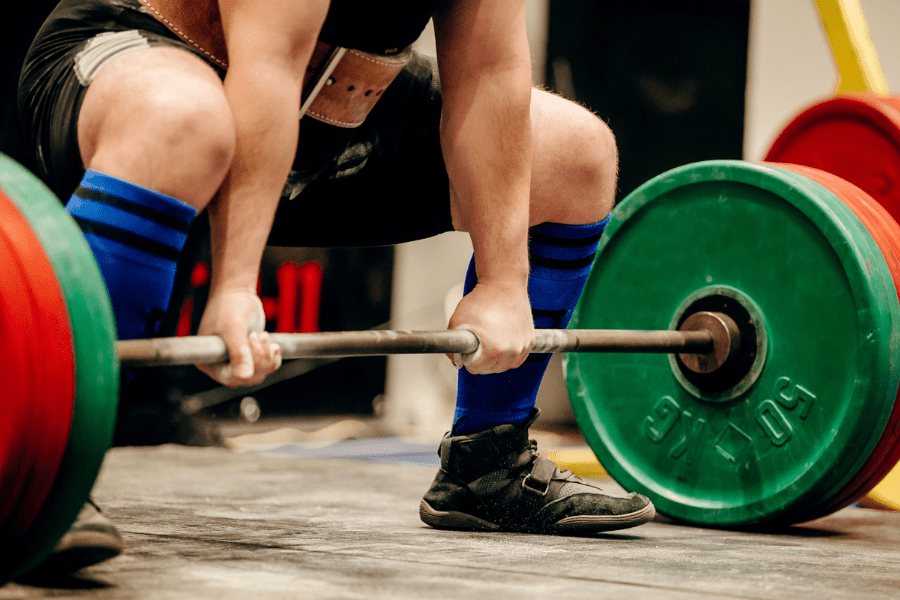
Sweat combined with the already present natural oils of your hands acts as a lubricant to help the bar, or whatever you’re holding slide right out of your hands. This is especially true if you’re working out in a hot and humid environment, like a garage gym in the middle of July.
Once you pick a weight off the floor, gravity teams up with the weight of the bar to actively try to pull the weight away from your hands.
Add to that the fact that a barbell, or dumbbell, naturally wants to roll out of your palm (this is why an alternated grip helps improve your gripping ability).
Gym chalk helps you fight back against all of these forces that are trying to ruin your set of deadlifts. By reducing the moisture in your hands, it helps you keep a better grip on the bar.
Gym Chalk Helps Reduce Blisters
Gym chalk helps improve your grip, which means the bar will be sliding in your hands less.
The friction caused by the bar sliding ever so slightly in your hands rep after rep is one of the main ways we end up with blisters on our hands after we’ve done a high volume of cleans, deads, pull-ups or rows.
So, by using chalk, not only are you improving your lifts, but you’re also saving your hands.
Gym Chalk FAQ
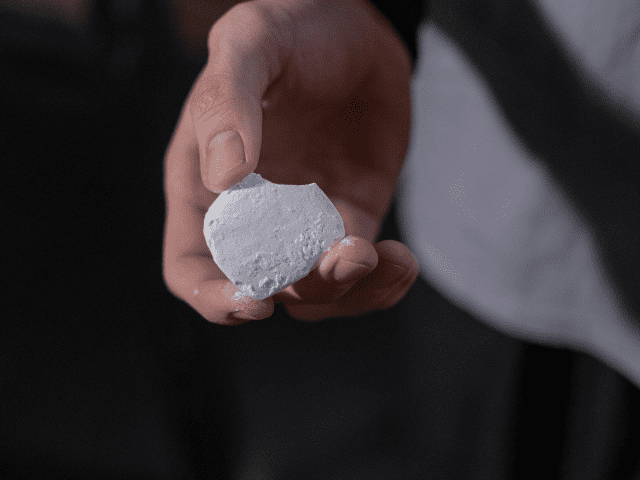
Here are a few of the questions that I get all the time when it comes to gym chalk
How To Properly Use a Block of Gym Chalk
The proper way to use a block of chalk is to use it – like a block!
If you’re one of these people who insist on taking it upon themselves to break up a block of gym chalk into dust in the chalk bucket – stop it immediately and go apologize to someone. It doesn’t matter who, just say you’re sorry.
All you need to do to properly use gym chalk is to take the block of chalk and wipe it across each hand a couple of times.
That’s it.
It doesn’t need to be coated on an inch thick. You’re just doing a set of barbell rows Billy, not competing at the Olympics.
Finally, if you’re using your own chalk in your home gym, you’ll want to find something to store your chalk in, even if it’s just a small Tupperware bowl. This will not only help keep your gym a little cleaner, but it will also save chalk from being wasted.
What Is Gym Chalk Made Of?
Gym Chalk is made out of Magnesium Carbonate. Most chalks will say that right on the packaging.
And just by the way, gym chalk is cheap. If you find someone charging six bucks for a block of chalk – run away.
Why Do Gyms Not Allow Chalk?
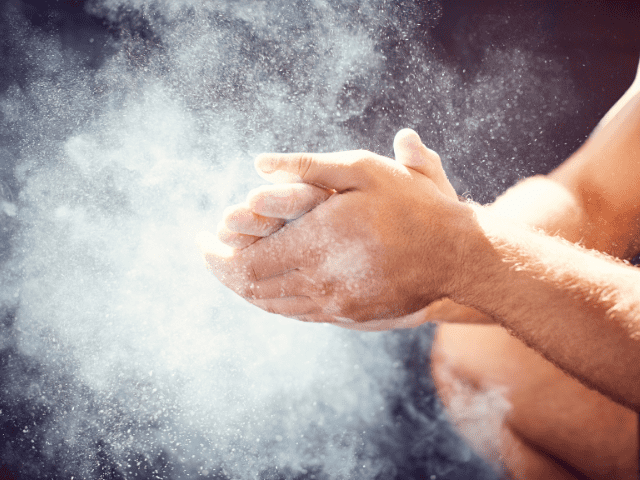
Because it makes a huge mess. Simple as that.
Once a gym makes the decision that chalk is allowed, that gym has to be comfortable with chalk being on everything. Some gyms like Olympic lifting gyms and most Crossfits are cool with that – globo box gyms are generally not.
Gym Chalk Alternatives
So, what if you workout at a gym that doesn’t allow chalk, but you want to reap some of the benefits that chalk provides? Are there any alternatives?
Well, if you think I’m going to suggest wearing gloves then you are sorely mistaken. I would never suggest anyone wear lifting gloves, ever.
Lifting Straps

Lifting straps are a great way to increase your grip and reduce blisters if you’re not able to use chalk. Even if you are able to use chalk, I’d still recommend using a pair of straps for high-volume days.
If you don’t have straps, keeping a fresh towel that you only use to dry your hands before a set can a long way towards helping keep your hands dry. Having said that, if you don’t have straps, buy some. Lifting straps cost like $10 to $15 dollars and will last you for years.
Here are a few of the lifting straps that I tested out.
Liquid Chalk
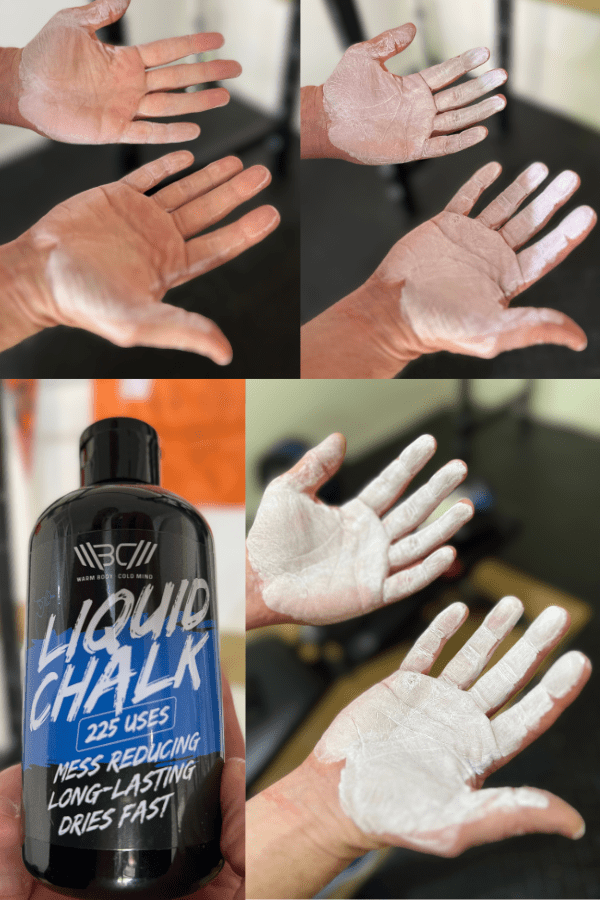
Finally, you can give liquid chalk a try. It provides the same level of grip that regular chalk does and if it’s a good quality liquid chalk, I’ve found it can even hold up to heat and excess sweat even a bit better.
It also makes less of a mess than block chalk and you should be able to get away with using it even in a gym that doesn’t allow block chalk.
Want even more alternatives? Here are 5 gym chalk alternatives that can keep your hands dry.
Final Thoughts
Sure, you can use gym chalk to do your best LeBron impersonation before your next big set of bench press.
However, there are real uses and real benefits to using gym chalk if used for the right reasons.
So, chalk up for that next set of deadlifts or shrugs and who knows, you may just have a new PR in your near future.
Stay Strong!

